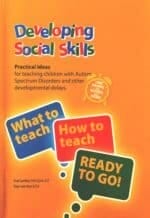WHY YOUR WORDS CAN CAUSE MELTDOWNS AND WHAT TO SAY INSTEAD
Overcome Communication Challenges Today!

**************************************
Join me for an upcoming Workshop:
Can't make these Workshop dates? Join me for a self-paced on-demand course:
Sue Larkey On-Demand Workshops
**************************************
- Are tired of repeating yourself constantly to a certain student?
- Are you over your instructions not being followed?
- Does the student become anxious or frustrated when you give them instructions?
- When you say certain words (e.g. ’NO) it triggers an overreaction or escalate behaviour?
- Is this impacting on the rest of the class and learning time?
The reason this is probably occurring is because this student doesn’t actually understand what they are meant to do. As a teacher when I realised the POWER OF MY WORDS it made a huge difference.
This can mean certain words are often very confusing, for example, students with autism typically struggle with the words STOP and NO. If an adult says STOP what does this mean? Do they mean stop breathing? Stop moving? Stop eating? STOP does not tell a child what they can do – it only tells them what they shouldn’t do. When you have to use STOP make sure you add a little bit more information so the child knows what they should do i.e. STOP working, pencil down, it’s time to listen.
Another instance where confusion may occur due to this literalness is in the use of the words ‘could’, ‘would’ and ‘can’ as they often sound like a choice rather than a direction. For example when asked, “Could you start your work?” children may just answer yes or no rather than taking action! It is therefore better to simply say Start work to avoid this confusion.
Although these instructions may sound over directed they clearly convey the intended message to the child. It is important children know what your words mean, so they respond appropriately for their own safety and learning.
Focus on telling the child what you want them to do rather than focusing on what they are not to do.
Example:
A child rushed into the bathroom and started playing with the taps
DON’T SAY: ‘NO! what are you doing?
DO SAY: First toilet, then wash hands.
The latter is far more supportive and directive for the child.
In the table below I have a few ideas to get you started about thinking about how your words matter and can be replaced so you say what you MEAN and Overcome Communication Challenges!
If you enjoyed content on how to Overcome Communication Challenges, Check out my other podcasts on Social Skills:
- Episode 126: Using Games to Teach – Part 1: All the Skills you can Learn
- Episode 73: Top 10 Tips to use when Teaching Social Skills to Students with Autism
- Epsiode 4: Promoting Social Understanding – Social Scripts
| by Jude Welton | Jude Welton looks at a hundred of the most common figures of speech in this visual workbook designed as a springboard for family and classroom discussions. Each figure of speech is accompanied by an illustration showing its literal meaning, which will help ASD children recognise and learn to enjoy metaphors and figurative language.

UNDERSTANDING AuDHD: Teaching & Supporting Students with Autism and ADHD Co-occurrence
✅ 2 Hours, 8 Lessons
✅ 6 Weeks to Complete 🎁 Bonus 6 Months Access (available until 28 Oct 25)
✅ Certificate of Completion
✅ Lesson Transcripts
 2 Hours
2 Hours
 Certificate
Certificate
USUALLY $149, NOW $49























 Sorry we no longer ship items outside Australia. Please consider the digital versions of Sue’s Books –
Sorry we no longer ship items outside Australia. Please consider the digital versions of Sue’s Books – 